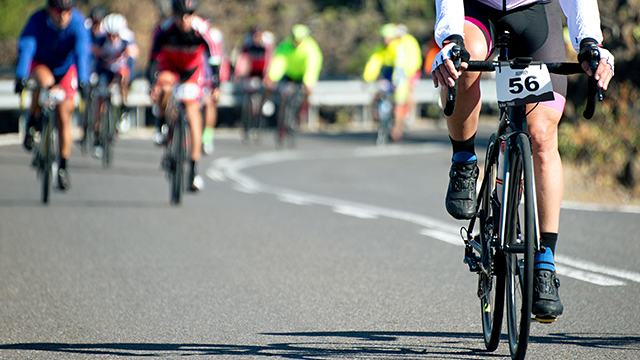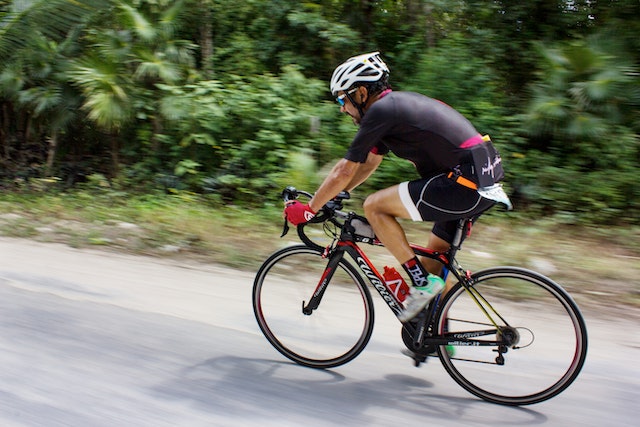Do you ever find yourself torn between wanting to pedal your heart out on your bike and also wanting to have time for other activities? It can be a challenging balance to strike, but finding the right duration for your weekly cycling sessions is key to achieving your goals while still enjoying a well-rounded life.
So, how long should you cycle each week? The answer depends on various factors, such as your fitness level, time availability, and personal objectives. In this article, we will explore these factors in detail, helping you set realistic goals for your cycling routine. We will also provide tips on maximizing your cycling sessions and listening to your body’s cues for any necessary adjustments.

Join us as we delve into the world of cycling duration and find the perfect fit for you. Let’s pedal towards a stronger, happier you!
1. Factors to Consider for Optimal Cycling Duration
You’ll want to consider a few factors for finding the optimal duration of your weekly cycling workouts.
First, think about your fitness level. If you’re just starting out, it’s important to gradually increase your cycling time to avoid overexertion. Aim for about 150 minutes of moderate-intensity cycling per week, spread out over at least three days. As your fitness improves, you can gradually increase the duration of your rides.
Another factor to consider is your goals. If you’re training for a specific event or competition, you may need to cycle for longer periods of time. Endurance training typically requires longer rides, ranging from two to four hours. However, if your goal is simply to stay fit and healthy, shorter rides of around 30 minutes to an hour can still provide significant benefits.
Additionally, take into account your schedule and lifestyle. Consider how much time you can realistically dedicate to cycling each week. It’s important to find a balance that works for you and allows you to enjoy your rides without feeling overwhelmed or stressed.
Remember, finding the optimal duration of your weekly cycling workouts is a personal process. Listen to your body, gradually increase your cycling time, and find a routine that fits your goals and lifestyle. Happy cycling!
2. Setting Personal Goals for Weekly Cycling
Curious about your weekly cycling goals? Wondering how to make the most of your rides? Setting personal goals for your weekly cycling can help you stay motivated and track your progress.
Here are some ideas to help you set meaningful goals:
- Distance: Determine how far you want to ride each week. Start with a realistic distance based on your current fitness level and gradually increase it as you improve. Whether it’s 20 miles or 100 miles, setting a distance goal can give you something to strive for.
- Frequency: Decide how many times a week you want to cycle. Whether it’s three times a week or every day, setting a frequency goal can help you establish a consistent routine and make cycling a regular part of your life.
- Intensity: Consider the intensity level at which you want to cycle. You can set goals like completing a certain number of hill climbs or reaching a specific heart rate zone during your rides. This can help you challenge yourself and improve your overall fitness.
Remember, your goals should be personal and realistic. They should push you just enough to keep you motivated, but not so much that they become overwhelming. By setting weekly cycling goals that resonate with you, you’ll feel a sense of belonging to the cycling community and enjoy the journey towards achieving them.
3. Balancing Cycling with Other Activities
Finding a balance between cycling and other activities can be challenging, but it’s essential for maintaining a well-rounded lifestyle. As much as you love cycling and want to spend all your time on the bike, it’s important to make sure you’re giving yourself enough time for other activities that bring you joy and fulfillment.
One way to find this balance is by creating a schedule that allows you to allocate time for both cycling and other activities. Consider using a table to visually organize your time and activities. In the left column, list your different activities, such as work, family time, hobbies, and socializing. In the right column, assign specific time slots for each activity throughout the week.
By doing this, you can ensure that you’re devoting enough time to cycling while also giving attention to other important areas of your life. It’s important to remember that a well-rounded lifestyle includes not only physical activity but also mental and emotional well-being. By finding this balance, you can create a sense of belonging to the different aspects of your life, allowing you to feel fulfilled and satisfied. So go ahead, grab your bike, but also make sure to make time for other activities that bring you happiness and fulfillment.
4. Tips for Maximizing Your Cycling Routine
Looking to get the most out of your cycling routine? Wondering how to make the most of your time on the bike and achieve your fitness goals? Here are some tips to help you maximize your cycling routine and make it even more effective.
First, it’s important to set realistic goals and create a plan that works for you. Determine how many days a week you can dedicate to cycling and how long each session will be. Consistency is key, so aim for at least three to four days a week of cycling.
Next, mix up your workouts to keep things interesting and challenge different muscle groups. Incorporate interval training, hill climbs, and endurance rides to improve your overall fitness and strength. Don’t forget to include rest days in your routine to allow your body to recover and prevent overtraining.
In addition, make sure you fuel your body properly before and after your rides. Eat a balanced diet with plenty of carbohydrates, protein, and healthy fats to provide the energy and nutrients your body needs to perform at its best.
Lastly, find a community or group of fellow cyclists to ride with. Cycling with others not only provides a sense of belonging but also pushes you to challenge yourself and improve your performance.
By following these tips, you can maximize your cycling routine and achieve your fitness goals while enjoying the journey along the way. Happy cycling!
5. Listening to Your Body: Adjusting Cycling Duration as Needed
Feeling fatigued or experiencing any discomfort? It’s important to listen to your body and make adjustments to the duration of your cycling sessions as needed. Your body knows best, so pay attention to any signals it’s sending you. By making these adjustments, you’ll be able to maximize the benefits of your cycling routine while minimizing the risk of injury or burnout.
To help you better understand how to adjust your cycling duration, here’s a helpful table:
| Signs of Fatigue | Duration Adjustment |
|---|---|
| Feeling tired or sluggish | Decrease duration by 10-20% |
| Muscle soreness or stiffness | Decrease duration by 10-20% |
| Difficulty sleeping or disrupted sleep patterns | Decrease duration by 10-20% |
Remember, these are just general guidelines. Everyone’s body is different, so it’s important to listen to your own body’s needs. If you’re feeling particularly fatigued or experiencing any discomfort, it’s okay to take a rest day or shorten your cycling session. Your body will thank you for it.
By listening to your body and adjusting your cycling duration as needed, you’ll be able to maintain a healthy and sustainable cycling routine. So, go ahead and give yourself permission to take it easy when necessary. Your body deserves it, and you’ll continue to enjoy the benefits of cycling for years to come. Keep up the great work!
Frequently Asked Questions
What type of bike is best for cycling?
The best type of bike for cycling depends on your preferences and needs. Whether you choose a road bike for speed, a mountain bike for off-road adventures, or a hybrid bike for versatility, find the one that makes you feel like you belong on the open road.
How often should I change my cycling route?
To keep your cycling routine exciting and challenging, it’s recommended to change your cycling route at least once a week. This will help you explore new areas and prevent boredom from setting in.
Can I cycle every day?
Yes, you can cycle every day! It’s a great way to stay active and improve your fitness. Just make sure to listen to your body and gradually increase your cycling duration to avoid overexertion.
Is it necessary to warm up before cycling?
Before hopping on your bike, it’s crucial to warm up. It helps prevent injuries and enhances performance. Just like a car needs a warm-up before hitting the road, your body needs a proper warm-up before cycling. So don’t skip it!
What are some common cycling injuries and how can I prevent them?
To prevent common cycling injuries, make sure to wear a helmet for head protection, use proper bike fitting and posture, maintain good bike handling skills, and gradually increase your cycling intensity and duration.
Conclusion
In conclusion, finding the right cycling duration each week is a personal journey. By considering factors such as fitness level, goals, and other activities, you can determine the optimal amount of time to spend on your bike.
Remember to listen to your body and make adjustments as needed. Whether it’s a leisurely ride or a challenging workout, cycling can bring joy, improve fitness, and enhance overall well-being. So pedal on, find your rhythm, and enjoy the many benefits of this exhilarating sport.





